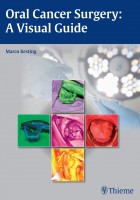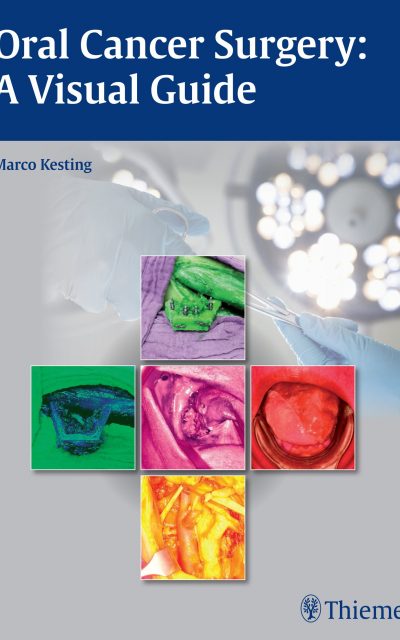 Author: Marco Kesting, MD
Author: Marco Kesting, MD
Publisher: Thieme – 120 pages. 208 illustrations
Book Review by: Nano Khilnani
Oral cancer surgery is one of the most difficult types of surgery because the perioral region is the only area of the human body that has all types of tissue: bone, cartilage, mucosa, muscle, and skin. Besides that, there are blood vessels and nerves in some areas that the surgeons have to contend with, writes Dr. Kesting in this book.
Ablative tumor surgery and reconstructive surgery remain difficult because of this unique anatomy, and for those tasks to be successful, the surgeon – who will have a higher chance of success – has to have skills in handling bone (including osteosynthesis) and soft tissue, as well as be experienced in microvascular techniques.
The surgeon must also anticipate surgical problems because of the complexity of dealing with multiple types of tissue, and must prepare to deal with as range of probably surgical problems.
One of the best ways to learn to do a task is to actually see what needs to be done. Along with detailed instructions to perform the steps itemized. “Seeing and learning to do” is the approach taken by the author and the illustrator in developing this unique and extremely useful book that has anywhere from one to as many as five graphics per page. The contents are organized neatly and presented around four chapters: airway management, lymph node management, ablative tumor surgery and reconstructive surgery, with subtopics as named below:
- Airway Management
- Tracheotomy
- Technique of Tracheotomy
- Lymph Node Management
- General Overview of Neck Dissection
- Neck Dissection Levels I to III (Supraomohyoid Dissection)
- Neck Dissection Levels IV and V
- Ablative Tumor Surgery
- Access to the Tumor and Tumor Resection
- Lip-split Mandibulotomy Access
- Weber-Fergusson Dieffenbach Approach
- Midfacial Degloving
- Reconstructive Surgery
- Considerations on Reconstructive Procedures
- Suggestions for Reconstructive Algorithms
- Nasolabial Flap
- Deltopectoral Flap
- Microvascular Anastomosis
- Radial Forearm Flap
- Anterolateral Thigh Flap / Mycocutaneous Vastas Lateralis Flap
- Osseocutaneous Fibula Flap
- Considerable Alternatives in Reconstruction
- Principles of Complex Reconstruction Planning
In this book you will find:
- Anatomical introductions connecting existing knowledge with surgical procedures
- Basic principles didactically edited in a series of pictures and / or diagrams
- Compact and concise nature enabling students to study, review, and summarize issues
- Historic landmarks relating to techniques given in anecdotal and informational style
- Key procedures offering surgeons possibilities to solve almost any problem in oral cancer
- Traditional approaches as well as new, innovative techniques
Each chapter begins on the right page with the chapter title and the main topics within the chapter. The following presents and discusses the historical highlights of the surgical procedures relating to the chapter title. These are followed by full-color drawings as well as actual photos of the various steps involved in the given surgical tasks, along with captions. At the end of the chapter you will find a list of books and materials under Recommended Reading.
This is an essential, readable, very useful and helpful book that belongs in your medical library if you’re a doctor or other healthcare professional dealing with patients that have oral cancer requiring surgery.
Marco Kesting, MD, DMD, FEBOMFS, Priv.-Doz. is affiliated with the Department of Oral and Maxillofacial Surgery, Klinikum Rechts der Isar, University of Technology, Munich, Germany.





